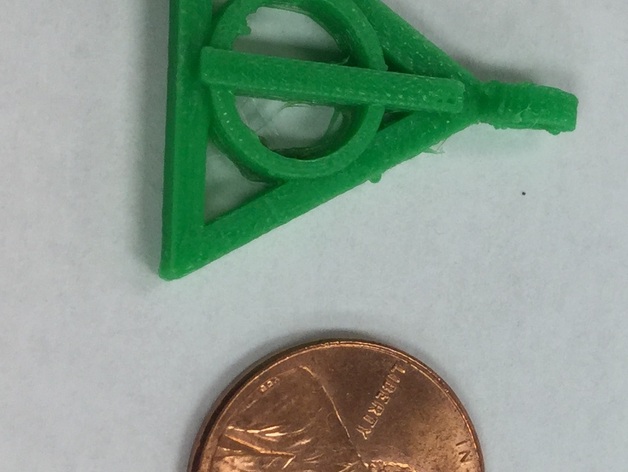
3D Printed Game Pieces
thingiverse
This is a lesson plan designed to enhance English and Language Arts classes. Students are tasked with creating a board game that represents a book they have read, using 3D printing to create the game pieces related to the subject of the book. Print Settings Printer Brand: MakerBot Printer: MakerBot Replicator (5th Generation) Rafts: Yes Supports: No Resolution: .1 Infill: 100% Notes: A 100% infill is not necessary for these parts. Standard settings should suffice. How I Designed This: The game pieces representing the Harry Potter series were found on Thingiverse and shrunk down to game-piece size (1" high, 25% scale) as an example of what can be done. Students should design their own game pieces representing an assigned book. Standards: CCSS Overview and Background: There are many lessons available for having students create board games as a formative assessment of their knowledge of a subject - in this case, a book they have read. They must understand the book to incorporate themes into their games. This lesson plan adds the 3D design element of creating game pieces using design software and a 3D printer. Objectives: Students will create a game that reinforces knowledge of the content of a book using 3D printing to create the game pieces. Skills Learned: CCSS.ELA-LITERACY.RL.9-10.1 Cite strong textual evidence to support analysis of what the text says explicitly as well as inferences drawn from the text. CCSS.ELA-LITERACY.RL.9-10.2 Determine a theme or central idea of a text and analyze its development over the course of the text, including how it emerges and is shaped by specific details; provide an objective summary of the text. CCSS.ELA-LITERACY.RL.9-10.3 Analyze how complex characters develop over the course of a text, interact with other characters, and advance the plot or develop the theme. CCSS.ELA-LITERACY.RL.9-10.6 Analyze a particular point of view or cultural experience reflected in a work of literature from outside the United States, drawing on a wide reading of world literature. Duration: This could be an end-of-semester project that students can work on outside the school environment, but would need at least 2 class periods to design their game pieces to be printed. Lesson Plan and Activity: Each student group will be assigned a book to gamify. They will then work in their group to develop a strategy for the game, questions to ask while playing that show knowledge of the subject (at least 25), and a design for the game pieces that would need to be created. Materials Needed: Student groups need access to a computer with design software. 3D printer with filament. For the gameboard: Poster board or file folders on a smaller scale, blank index cards for the game questions, spinner or dice. Duration of Lesson: At least two class periods Preparation (taken from http://www.readwritethink.org/files/resources/lesson-docs/NovelBoardGameRubric.pdf): 1. Make your game board neat, colorful, interesting, and creative! 2. Create at least 25 questions and answers for your game that relate to the novel. The questions must be somehow incorporated into playing the game. 3. Relate the format and purpose of your game to the novel in some way. 4. Write directions for your game that would make it perfectly clear how to play the game. Type the directions and include them with the game. 5. Make sure the content and difficulty of your game are appropriate for your novel and for your classmates' abilities. References: http://www.readwritethink.org/files/resources/lesson-docs/NovelBoardGameRubric.pdf
With this file you will be able to print 3D Printed Game Pieces with your 3D printer. Click on the button and save the file on your computer to work, edit or customize your design. You can also find more 3D designs for printers on 3D Printed Game Pieces.
